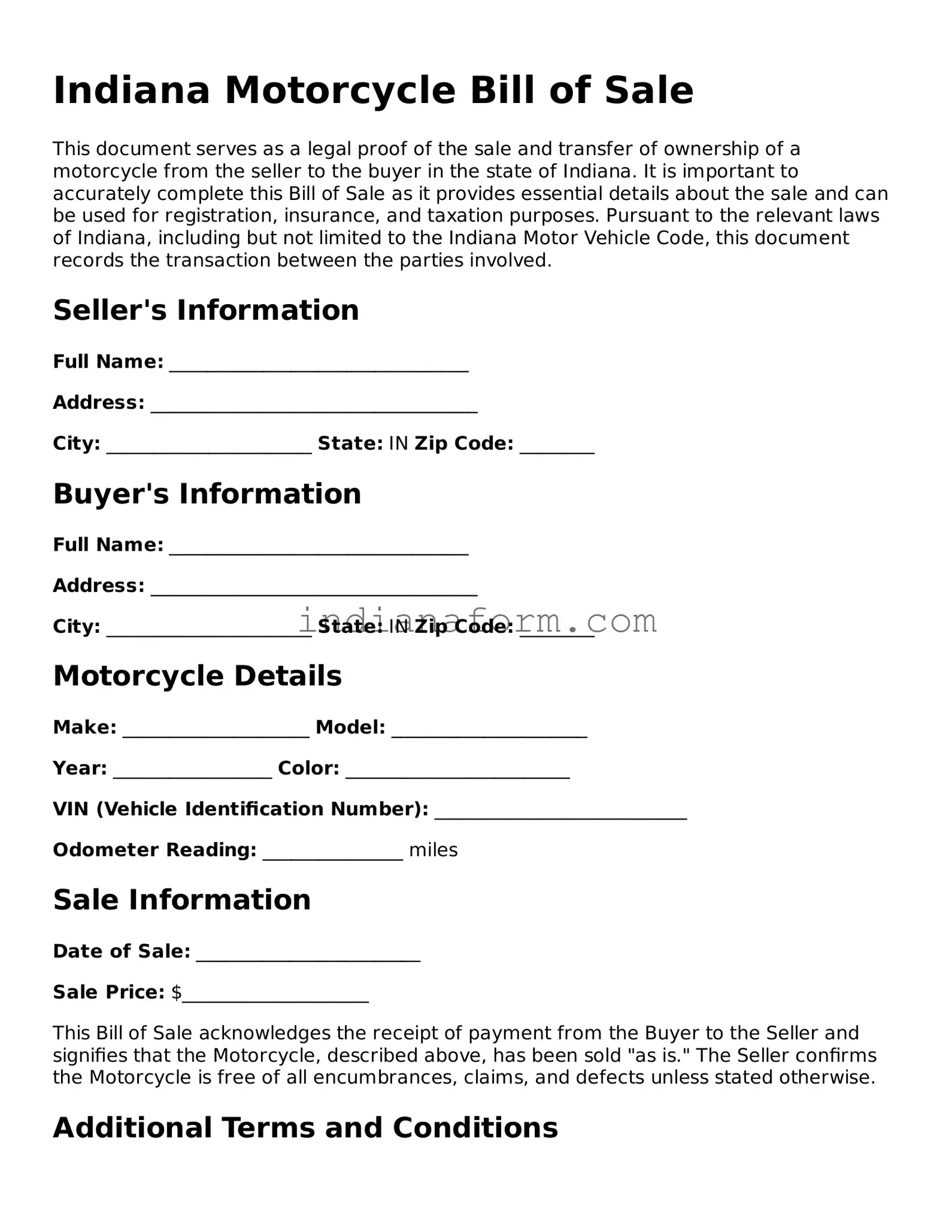Indiana Motorcycle Bill of Sale
This document serves as a legal proof of the sale and transfer of ownership of a motorcycle from the seller to the buyer in the state of Indiana. It is important to accurately complete this Bill of Sale as it provides essential details about the sale and can be used for registration, insurance, and taxation purposes. Pursuant to the relevant laws of Indiana, including but not limited to the Indiana Motor Vehicle Code, this document records the transaction between the parties involved.
Seller's Information
Full Name: ________________________________
Address: ___________________________________
City: ______________________ State: IN Zip Code: ________
Buyer's Information
Full Name: ________________________________
Address: ___________________________________
City: ______________________ State: IN Zip Code: ________
Motorcycle Details
Make: ____________________ Model: _____________________
Year: _________________ Color: ________________________
VIN (Vehicle Identification Number): ___________________________
Odometer Reading: _______________ miles
Sale Information
Date of Sale: ________________________
Sale Price: $____________________
This Bill of Sale acknowledges the receipt of payment from the Buyer to the Seller and signifies that the Motorcycle, described above, has been sold "as is." The Seller confirms the Motorcycle is free of all encumbrances, claims, and defects unless stated otherwise.
Additional Terms and Conditions
(If applicable, list any additional terms and conditions related to the sale of the motorcycle here.)
________________________________________________________________________
________________________________________________________________________
Signatures
Seller's Signature: ______________________ Date: _______________
Buyer's Signature: ______________________ Date: _______________
This document is legally binding and, if required, can be notarized to verify the identity of the parties involved.
Disclaimer
This template serves as a guideline only. Parties may wish to consult a legal professional to ensure this document meets all necessary legal requirements for the state of Indiana.
